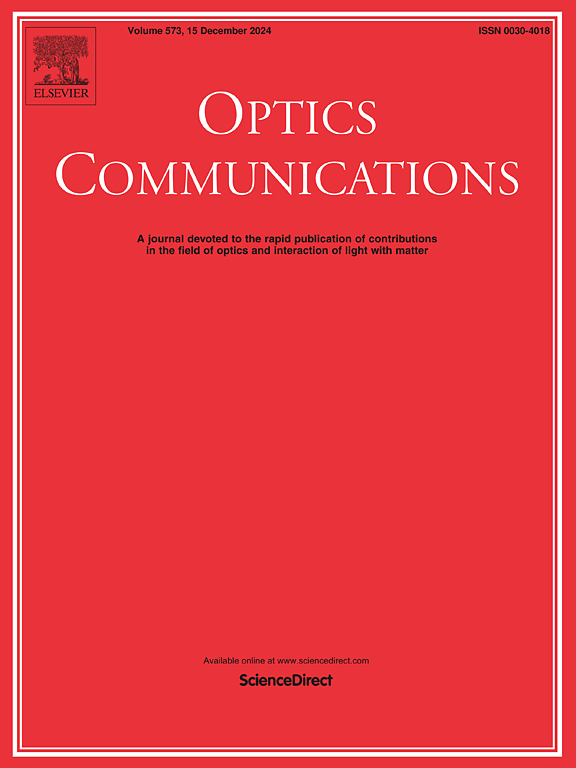基于与法布里-珀罗干涉仪并联的线性萨格纳克干涉仪产生的游标效应的光纤温度传感器
IF 2.2
3区 物理与天体物理
Q2 OPTICS
引用次数: 0
摘要
我们开发了一种新型光纤温度传感器,它基于一个与法布里-佩罗干涉仪(FPI)并联的线性萨格纳克干涉仪(LSI)。该传感器利用 FPI 和 LSI 的叠加效应产生游标效应。理论和实验结果表明,在 40 ℃-50 ℃ 的温度范围内,并联结构的温度灵敏度达到 13.27 nm/℃,与理论预测完全一致。值得注意的是,当 LSI 和环形萨格纳克干涉仪(CSI)表现出相同的温度灵敏度和自由光谱范围(FSR)时,LSI 的长度仅为 CSI 的一半。LSI 由单段熊猫光纤构成,不形成回路。因此,与传统的 CSI 传感器相比,这种传感器更简单、更容易制造,在结构简单性和制造效率方面具有显著优势。因此,该传感器在不同环境下的传感应用中具有重要的参考价值。本文章由计算机程序翻译,如有差异,请以英文原文为准。
Fiber optic temperature sensor based on Vernier effect generated by a linear sagnac interferometer in parallel with a Fabry-Perot interferometer
A novel fiber-optic temperature sensor based on a Linear Sagnac Interferometer (LSI) in parallel with a Fabry-Pérot Interferometer (FPI) has been developed. This sensor leverages the superposition of the FPI and LSI to generate a Vernier effect. Theoretical and experimental results demonstrate that within the temperature range of 40 °C–50 °C, the temperature sensitivity of the parallel structure reaches 13.27 nm/°C, aligning well with theoretical predictions. Notably, when the LSI and Circular Sagnac Interferometer (CSI) exhibit identical temperature sensitivities and free spectral ranges (FSR), the length of the LSI is only half that of the CSI. The LSI is constructed from a single segment of Panda fiber and does not form a loop. Consequently, this sensor is simpler and easier to manufacture compared to conventional CSI sensors, offering significant advantages in structural simplicity and fabrication efficiency. This makes the proposed sensor a valuable reference for sensing applications in diverse environments.
求助全文
通过发布文献求助,成功后即可免费获取论文全文。
去求助
来源期刊

Optics Communications
物理-光学
CiteScore
5.10
自引率
8.30%
发文量
681
审稿时长
38 days
期刊介绍:
Optics Communications invites original and timely contributions containing new results in various fields of optics and photonics. The journal considers theoretical and experimental research in areas ranging from the fundamental properties of light to technological applications. Topics covered include classical and quantum optics, optical physics and light-matter interactions, lasers, imaging, guided-wave optics and optical information processing. Manuscripts should offer clear evidence of novelty and significance. Papers concentrating on mathematical and computational issues, with limited connection to optics, are not suitable for publication in the Journal. Similarly, small technical advances, or papers concerned only with engineering applications or issues of materials science fall outside the journal scope.
 求助内容:
求助内容: 应助结果提醒方式:
应助结果提醒方式:


